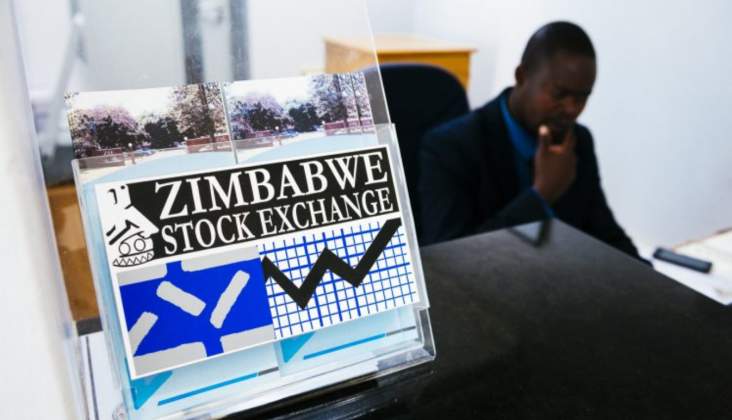Monetary policy to tackle exchange rate instability
THE Reserve Bank of Zimbabwe (RBZ)’s forthcoming monetary policy statement (MPS) is expected to prescribe several interventions to stabilise the Zimbabwe dollar exchange rate, officials and analysts have said.
RBZ Governor Dr John Mangudya is expected to present the 2024 MPS later this month. This comes as the Zimbabwe dollar has somehow been losing ground against the US dollar, raising concerns about exchange rate stability.
A similar trajectory at the beginning of the year resulted in price increases of products and services, putting them beyond the reach of many, but several swift interventions by the Government restored sanity in the market.
Such interventions included hiking bank lending rate to stymie speculative borrowing, payment of corporate tax in local currency, transfer of external loan servicing obligations from the central bank to the Treasury, forex auction market for banks, willing buyer willing seller forex market and requiring import duties to be paid in Zimbabwe dollars, except for luxury goods.
The exchange rate has been noticeably unstable since December last year.
In the recent past, the instability has been driven by several factors including speculative behaviour, an increase in market liquidity and suspected economic saboteurs amid already high demand for foreign currency.
The Zimbabwe dollar has retreated to between $ 16,000 and $ 16,500 against the United States dollar on the parallel market from about $8 000 to US$1 at the end of December last year.
It is currently trading at $ 10,706,87 to the greenback on the official market.
Given that local currency prices in Zimbabwe are pegged to the US dollar, the depreciation of the domestic unit has started to present challenges in the market such as price increases and distortions.
A member of the RBZ Monetary Policy Committee Mr Persistence Gwanyanya told The Herald Finance and Business that this year’s MPS would be presented by Dr Mangudya any time before the end of the month.
“It will be out later this month. Ordinarily, the MPS should be presented at the end of January or February. I am very hopeful it will address all the monetary issues in the economy right now,” Mr Gwanyanya said.
Finance, Economic Development and Investment Promotion Minister Professor Mthuli Ncube recently attributed the depreciation of the local currency against major currencies to speculative activity and a shortage of hard currency in the market. On account of the above, Prof Ncube said the Government would soon unveil fresh and harsh measures to curtail the Zimbabwe dollar from relentless sliding.
Financial market analyst Mr George Nhepera said: “Recently the central bank of Nigeria faced a similar situation of high premiums between the official exchange rate and alternative rate or rather black market rate, fully a market-determined exchange rate system.
“We hope the RBZ Governor in the upcoming MPS, may want to tap into this wisdom in fundamentally changing our exchange rate policy.
“Nevertheless such a policy shift requires a very strong coordination with the industry and Government objectives of fiscal consolidation and tightening so that we avoid as a country an unintended consequence that may negatively affect the general public and business.”
He said Zimbabwe’s long-term solution to exchange rate policy rests in becoming a strong export-led economy with the capacity to generate high revenues well ahead of imports.
“The Governor could (prescribe) such policies with the capacity to boost our exports,” said Mr Nhepera.
Economic commentator Ms Wendy Mpofu said the forthcoming MPS should be hinged on outlining concrete measures to harness inflation and exchange rate instability.
“I think given what is happening in the market, monetary authorities in the forthcoming MPS should outline concrete interventions to control inflation, tightening interest and addressing the parallel market exchange rate.
“The Zimbabwe dollar continues to depreciate against major currencies and thus the MPS should address strategies to stabilise the currency, including building confidence in the local currency and attracting foreign investment,” she said.
Another financial market analyst Mr Grey Munetsi-Nyama commended the Treasury for taking over some quasi-fiscal activities that had found themselves under the purview of the RBZ saying this helps the central bank to maintain a lesser focus on its core mandate.
“Looking at where the Zimbabwean economy currently stands, critical areas for the RBZ to maintain a keen eye on include liquidity, cost of borrowing and exchange rate stability.
“Starting with the last point (exchange rate), the market continues to self-dollarise. The market is sending a message that the time is not right to focus on the Zimbabwean dollar.
“The RBZ can either attempt to force the market to reverse the dollarisation; alternatively, the central bank can acknowledge the current market sentiment and in the short-term focus on managing this reality while gradually working on restoration of confidence in the issuer of the local currency first before attempting to de-dollarise in the future.”
Mr Munetsi-Nyama said the current split of US dollars to Zimbabwe dollar transactions dictates that the central bank focuses on managing the greenback transactions in a manner that encourages formalisation of the transactions.
“To that end, and in light of inflation levels (US$) inflation, the policy lending rate needs to be revised downwards; reserve requirements for US$ assets should also be revised down to enhance liquidity and encourage bank lending.
“This should provide relief to industry; the Zimbabwe dollar lending rates can be maintained at much higher rates in line with Zimbabwe dollar inflation rates; this should minimise speculative Zimbabwe dollar borrowing and excessive creation of local currency money supply,” he said.-herald











